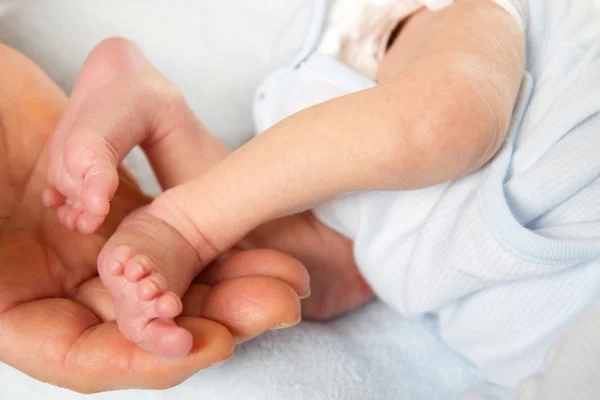Baby delivery predictor
Labor Probability Calculator
About the Labor Probability Calculator
Will you go into labor today? Tomorrow? Next week? The labor predictor estimates the odds of spontaneous labor on a given day based on where you are relative to your due date using statistical modeling.
Important Tool Caveat
This tool predicts the odds of spontaneous labor without consideration of possible negative outcomes. It should not be used when making medical decisions.
About the Model
Prior research has shown that the distribution of spontaneous labor approximates a normal distribution with a standard deviation of 9 [1] or 13 days [2]. These studies provide the initial building blocks for our model, but fail to paint a complete picture. Neither distribution does a good job of estimating the number of preterm deliveries. The CDC has found that 9.6% of babies are born prematurely, before 37 weeks. The normal distribution based on [1] and [2], however, would predict less than 3% of babies are born prematurely (. 03% and 2.7% respectively). In fact, [1] specifically excluded preterm deliveries from their analysis which is why their model predicts so few preterm babies, which explains why it's model predicts so few of them.
The normal distribution is favored in these types of applications for it's simplicity and tendency to fit the data. In this case, however, the normal distribution is likely an over simplification. A key drawback is that the normal distribution is a symmetric distribution. That means two points equally far from the mean will have the same probability. A symmetric distribution that predicts 10% of babies will be born before 37 weeks will also predict 10% of babies will be born after 43 weeks. For all the births prior to 30 weeks, there would be a similar number of births after 50 weeks. Additionally, in a symmetric distribution the median (point which half of all pregnant individuals would have gone into labor), is equal to the mode (most common day to go into labor.) In prior studies, however, the mode date is typically after the median [2].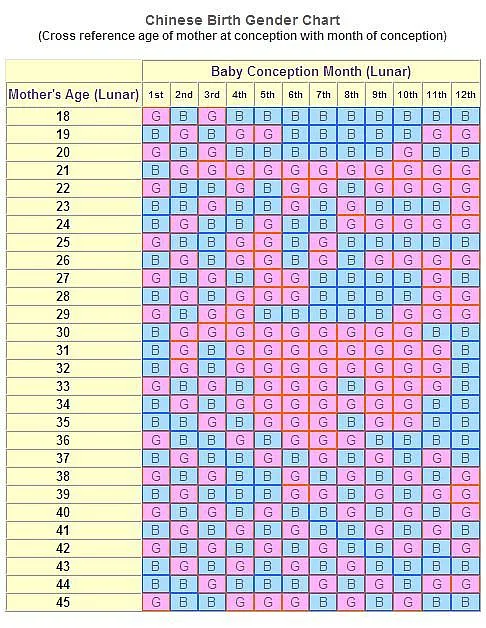 Although not scientific, conventional wisdom is that the most common day to go into labor is around 41 weeks.
Although not scientific, conventional wisdom is that the most common day to go into labor is around 41 weeks.
Taken together, these data points suggests that a skewed normal distribution might be more appropriate. The skewed normal distribution is a family of distributions that includes the normal distribution, however the skewed normal distribution need not be symmetric. Where the normal distribution is defined by two parameters (mean and standard deviation), the skewed normal distribution is defined by three (location, shape and scale). Using mean squared error we identified a skewed normal distribution that closely approximates the normal distribution identified with prior research (MSE of 0.002), accounted for 10% of spontaneous labors occurring prematurely, and predicted roughly half of all pregnant individuals would go into labor before their due date and half after.
- [1] H. Kieler; O. Axelsson; S. Nilsson; U. Waldenströ (1995). "The length of human pregnancy as calculated by ultrasonographic measurement of the fetal biparietal diameter".
 Ultrasound in Obstetrics & Gynecology. 6 (5): 353–357. doi:10.1046/j.1469-0705.1995.06050353.x
Ultrasound in Obstetrics & Gynecology. 6 (5): 353–357. doi:10.1046/j.1469-0705.1995.06050353.x - [2] Bergsjø P, Denman DW 3rd, Hoffman HJ, Meirik O. (1990). "Duration of human singleton pregnancy. A population-based study.". Acta Obstet Gynecol Scand: 197–207.
Differences between Datayze's model and those found on other websites
The key difference between our model and every other model out there (that we know of) is our model better incorporates the possibility of preterm spontaneous labor. Like [1], most online models predict the probability of spontaneous labor before 37 weeks is approximately zero. As you can see from the Full Chart we estimate the probability of spontaneous labor before 37 weeks as 9.6%, matching the number from the CDC. If you're past 37 weeks, this distinction will be less important. Before 37 weeks and our model will serve you much better.
Differences between Labor Probability Chart and the Labor Probability Calculator
You may notice the probabilities differ between the Labor Probability Chart and the Labor Probability Calculator. That is because the two apps are modeling two similar sounding, yet different events. This Labor Probability Chart shows the probability of spontaneous labor for a pregnant person without considering how far along she is in their pregnancy. The Labor Probability Calculator shows the probability of spontaneous based on how far along she is by renormalizing the distribution to include only the possible remaining days in a person's pregnancy. After all, for a person who hasn't gone into labor by today the probability of spontaneous labor starting yesterday is, by definition, 0%. Statistically speaking it's the difference between the probability of labor at 40 weeks 0 days in general, p_labor(40w0d), and the probability of labor at 40 weeks 0 days for a person who is already 39 weeks along, p_labor(40w0d|39WeeksAlong).
That is because the two apps are modeling two similar sounding, yet different events. This Labor Probability Chart shows the probability of spontaneous labor for a pregnant person without considering how far along she is in their pregnancy. The Labor Probability Calculator shows the probability of spontaneous based on how far along she is by renormalizing the distribution to include only the possible remaining days in a person's pregnancy. After all, for a person who hasn't gone into labor by today the probability of spontaneous labor starting yesterday is, by definition, 0%. Statistically speaking it's the difference between the probability of labor at 40 weeks 0 days in general, p_labor(40w0d), and the probability of labor at 40 weeks 0 days for a person who is already 39 weeks along, p_labor(40w0d|39WeeksAlong).
Take the Probabilities With You
Wondering what the probability is of going into labor before your due date, or before your induction date? Want to bookmark the Labor Probability Calculator with all it's data so you don't have to keep re-entering your date info it day after day? If you check the "Remember This" check box, a cookie will be created that stores your due date on your computer.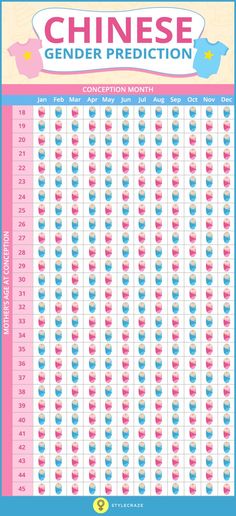 Alternatively, you can save the parameterized URL by prepending the string ?duedate=MM/DD/YYYY to the end of the URL where MM/DD/YYYY corresponds to your due date. For example, the parameterized URL for the above input with a January 31st, 2023 due date would be:
Alternatively, you can save the parameterized URL by prepending the string ?duedate=MM/DD/YYYY to the end of the URL where MM/DD/YYYY corresponds to your due date. For example, the parameterized URL for the above input with a January 31st, 2023 due date would be:
https://datayze.com/labor-probability-calculator.php?duedate=01/31/2023
This website is intended for general information & entertainment purposes only. This website is not intended to be considered medical advice. I am happy to answer questions about the apps, and the mathematics behind them. I cannot answer medical questions.
Pregnant and thinking ahead? You might enjoy our other pregnancy apps, including a Week by Week Pregnancy Calendar. If it's really early in your pregnancy you may be interested in our Miscarriage Odds Reassurer, which is designed to help ease any miscarriage fears by emphasizing the odds of carrying to birth rather than the odds of miscarriage, or our Daily Miscarriage Probability Chart which shows how the probability changes over the course of the first twenty weeks.
Wanting to become pregnant? Our Time to Conception Estimator can estimate how long it may take.
Have baby names on the brain?
Try our Baby Name Apps, including Baby Name Uniqueness Analyzer or Baby Name Explorer. Still can't find a name you like? Try the Unique Baby Name Generator or the Name Blender which generates new names based on the latest trends.
Due Date Calculator | Pregnancy Calculator
Choose a calculation method Last periodConception dateI know my due date
First day of my last period
BabyCenter's Due Date Calculator
Use our pregnancy due date calculator by plugging in either the date of your last menstrual cycle or the date you know you conceived. The calculator will do the rest.
How is my due date calculated?
There are several ways your due date is determined. If you happen to know the day you conceived, you can count 38 weeks from that day to find your due date.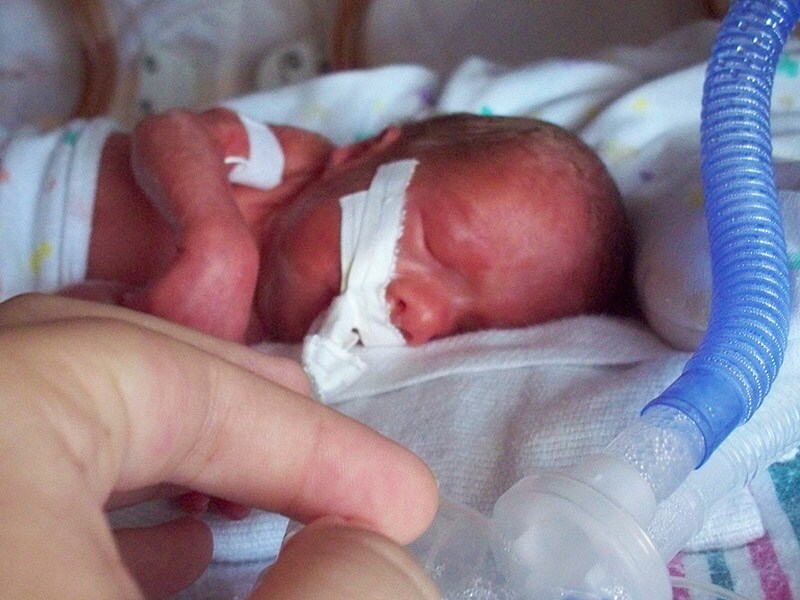 (Human gestation takes about 38 weeks.)
(Human gestation takes about 38 weeks.)
But very few expectant moms know exactly when they conceived. Even if you only had sex once during your fertile period, you wouldn't conceive on that day unless you happen to be ovulating. Sperm can live for up to five days inside your fallopian tubes. So, it could be up to five days after you have sex that you release an egg (ovulate) and it gets fertilized by a waiting sperm. That's the day you conceive.
So, without knowing the day of conception, how does anyone determine a due date?
First day of your last period
The most common way to calculate your pregnancy due date is by counting 40 weeks from the first day of your last menstrual period (LMP). And that's how most healthcare providers do it.
If your menstrual cycle length is the average length (28-day cycle), your menstrual cycle probably started about two weeks before you conceived. This explains why pregnancies are said to last 40 weeks instead of 38 weeks.
This method doesn't take into account how long your menstrual cycle actually is or when you think you might have conceived. But generally speaking, women typically ovulate about two weeks after their menstrual cycle starts. And women are more likely to know when their last period started than the day they ovulated.
Conception date
If you do happen to know precisely when you conceived – say, if you were using an ovulation predictor kit or tracking your ovulation symptoms – you can calculate your pregnancy due date based on your conception date. Just choose that calculation method from the pulldown above and put in your date.
Note: Again, you don't necessarily conceive on the day you have sex.
IVF transfer date
If you conceived through IVF, you can calculate your due date using your IVF transfer date. If you had a Day 5 embryo transfer, count 261 days from your transfer date. If you had a Day 3 embryo transfer, count 263 days.
Can my due date change?
Your healthcare provider might revise your due date if your baby is measured during a first trimester ultrasound scan and found to be much bigger or smaller than expected for gestational age. This is more likely to happen if you have an irregular menstrual cycle length that makes it hard to pinpoint the date of conception.
This is more likely to happen if you have an irregular menstrual cycle length that makes it hard to pinpoint the date of conception.
Your healthcare provider will measure your baby during that ultrasound exam to figure out how far along your baby is and then provide you with a new due date.
What if I already know my due date?
If you already know your due date, you can use this calculator to see your pregnancy timeline. It will tell you when you'll hit various milestones, and when you may be due for prenatal tests and prenatal visits. You'll also find what your baby's sign and birthstone will probably be and which famous people were born on your due date.
How likely am I to give birth on my due date?
Of course, a due date calculation is always approximate, whether it's from our tool or from your doctor or midwife. Only 1 in 20 women delivers on her due date. You're just as likely to go into labor any day during the two weeks before or after.
Want more information about how the weeks, months, and trimesters of pregnancy are counted? See our pregnancy timing chart.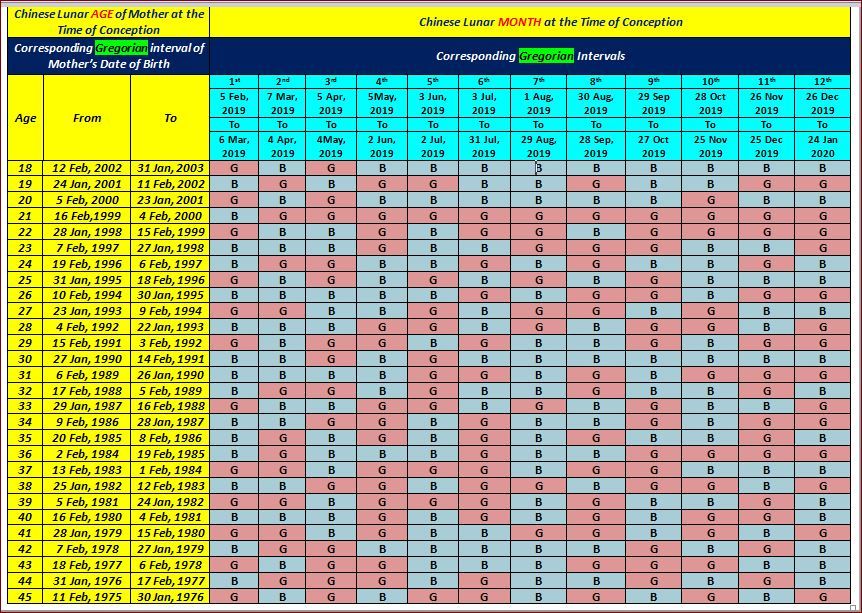
How soon can I take a pregnancy test?
With all this talk about pregnancy due dates, you may be wondering when you can take a pregnancy test. To ensure you get the most accurate reading, it's best to wait a few days after your missed period to take a pregnancy test.
At-home urine tests measure the amount of hCG (human chorionic gonadotropin) present in your body. If you take a pregnancy test before you miss your period, you may not get an accurate result, despite what some tests advertise.
If you're getting a blood test in your provider's office, you may get results sooner. These tests also measure the amount of hCG in your bloodstream, but they're more sensitive than at-home urine tests. Blood tests may be able to detect pregnancy six to eight days after ovulation.
Read more:
- Your pregnancy, week by week
- Your first trimester pregnancy checklist
- Pregnancy Weight Gain Calculator
- Ovulation Calculator
- See all tools
Harbingers of childbirth - How to understand that it is time to go to the hospital?
January 10, 2017
Alekseeva Inna
Obstetrician-gynecologist, Doctor of the highest category
Subscribe to our Instagram! Useful information about pregnancy and childbirth from leading obstetricians and gynecologists in Moscow and foreign experts: https://www. instagram.com/roddompravda/
nine0009 Tips and opinions from leading children's specialists: https://www.instagram.com/emc.child/
Every pregnant woman with excitement and joy awaits the upcoming birth. The closer the cherished date, the more attentively the expectant mother listens to the changes taking place in her body and in the behavior of the baby. Of course, the expectant mother wants to know by what signs it is possible to understand that childbirth is just around the corner.
It is customary to call the harbingers of childbirth external, really tangible changes in the body, which are direct preparation for the onset of labor. The tissues of the birth canal - the cervix, vagina, vulva, perineum - become quite elastic, extensible, but at the same time - very strong and resistant to tearing. The cervix is located in the center of the vaginal vault, shortens by almost half its normal length and softens significantly. The cervical canal - the lumen of the cervix connecting the uterine cavity with the vagina - opens slightly, as a result, the diameter of the cervical canal is approximately 2-2. 5 cm. Of course, such a significant "perestroika" takes more than one day. nine0003
Female sex hormones are responsible for preparing for childbirth. During the nine months of pregnancy, progesterone "reigns" in the body of the expectant mother. It ensures the normal tone of the uterus (relaxed state of the muscles), the production of cervical mucus - a mucous plug in the cervix that protects the fetus from infection. The amount of progesterone during pregnancy largely determines the normal development and growth of the fetus, the necessary concentration of nutrients and oxygen in the mother's blood, as well as their timely and uninterrupted delivery to the baby. nine0003
Shortly before childbirth, the production of progesterone decreases markedly, it is replaced by estrogens - female sex hormones. The increase in estrogen in the blood is caused by the need to prepare the body for the upcoming birth. It is these hormones that are responsible for the elasticity and patency of the birth canal. The rate of cervical dilatation in the first stage of labor depends on them. In the second period, when the cervix is fully opened and the fetus passes through the birth canal, it is also very important how elastic and extensible the walls of the vagina are - this will largely determine the duration of the straining period. Finally, the onset of labor itself depends on the level of estrogen: contractions occur as a result of a nerve impulse that is caused by a certain level (“peak”) of estrogen accumulation. nine0003
These changes are normal and do not require an unscheduled visit to the doctor or hospitalization. Harbingers of childbirth are manifestations of a planned restructuring in the body of a future mother, the “finishing touches” of preparation for the upcoming joyful event.
The absence of clearly perceptible changes on the eve of the expected date of birth is also not a pathology. Not all expectant mothers note those changes in well-being that are commonly called harbingers. However, this does not mean that there is no preparation. In some cases, the “final preparations” go unnoticed by the pregnant woman. Therefore, do not worry or urgently contact a specialist. nine0003
The appearance of any of the "harbingers" indicates the likelihood of the development of regular labor activity over the next two hours - two weeks. None of the sensations described gives a 100% guarantee that a woman will become a mother within the next 24 hours. Hormonal changes before childbirth begin approximately two weeks before the expected birth. Theoretically, during these two weeks, at any time, a pregnant woman can notice certain changes in her state of health. Consequently, the absence of labor activity an hour, a day, or even a week after the first noted changes is not a pathology and does not require special medical advice. nine0003
- Scarlet discharge from the genital tract in any amount.
- Severe abdominal pain.
- Increased blood pressure (above 130/80 mmHg).
- An increase in body temperature to 37.5 ° C and above.
- Increased heart rate (more than 100 beats per minute).
- Severe headache, vomiting, blurred vision.
- Significant increase in edema. nine0035 Absence, sharp decrease, sharp increase in fetal movements.
- Suspicion of amniotic fluid leakage.
Weight loss . Shortly before the expected date of delivery, the expectant mother may notice some “weight loss”. Weight loss during this period is associated with the removal of excess fluid from the body, that is, a general decrease in edema. The more pronounced the fluid retention during pregnancy, the more mass the pregnant woman will “lose” on the eve of childbirth. During pregnancy, water is retained in the body of all expectant mothers to a greater or lesser extent. The reason is progesterone - a hormone whose main function is to support the processes of pregnancy. Before childbirth, progesterone is replaced by estrogen. It is estrogen that removes excess fluid from the body. The first results are visible on the hands, feet and legs. Depending on the severity of edema, weight loss before childbirth varies from 0.5 to 2.5 kg. nine0003
Change of stool. Increased frequency and change in the consistency of physiological functions on the eve of childbirth is also associated with an increase in estrogen levels and the removal of fluid from the body of the future mother. Similar changes in the body of a non-pregnant woman are observed during menstruation. The chair can become more frequent up to 2-3 times a day, at the same time there may be some liquefaction of the feces. More frequent urge to defecate, a sharp change in the color and smell of feces, combined with nausea and vomiting, is a reason for consulting a doctor - food poisoning can be masked under such "harbingers". nine0003
Fundal prolapse. Shortly before delivery, the baby presses the presenting part (most often the head) against the lower segment of the uterus and pulls it down, pressing against the entrance to the small pelvis. The fetus "groups", taking the most advantageous position for itself at the time of the onset of contractions. As a result of such "preparations" from the side of the fetus, the uterus "sags", and its upper part - the bottom - ceases to exert pressure on the internal organs. After lowering the bottom of the uterus, the pregnant woman has no shortness of breath (it becomes easier to breathe, there is a feeling of a full breath). If in the last month the expectant mother had belching, heartburn, a feeling of heaviness in the stomach after eating, these phenomena disappear when the bottom of the uterus descends. However, lowering down to the pelvic area, the uterus will put more pressure on the internal organs located there. The pelvic organs, in particular, include the bladder. It is located directly in front of the uterus, in its lower part.
Behind the uterus, at a distance of several centimeters, there is an ampulla of the rectum - the output section of the intestine. It is not difficult to guess what the result of pressure on the bladder and rectum will be: the urge to go to the toilet before childbirth can become noticeably more frequent. nine0003
Isolation of the mucous plug. During pregnancy, the glands of the mucous membrane of the cervical canal (the lumen of the cervix) secrete a special secret. It is a thick, sticky, jelly-like mass that forms a kind of cork. The mucous plug completely fills the cervical canal, preventing the penetration of bacterial flora from the vagina into the uterine cavity. Thus, cervical mucus, or the mucous plug of the cervix, protects the fetus from ascending infection. Before childbirth, when the cervix begins to soften under the influence of estrogen, the cervical canal opens slightly and the cervical mucus contained in it can be released. In this case, the expectant mother may find small clots of yellowish-brownish mucus, transparent, jelly-like, odorless. The mucous plug can stand out at once or depart in parts during the day. In the latter case, slight discomfort is sometimes noted in the form of "sipping" in the lower abdomen, reminiscent of sensations before or during menstruation. However, most often, the release of the mucous plug is not accompanied by tangible changes in the well-being of the expectant mother. After the discharge of the mucous plug, it is not recommended to visit the pool, swim in the reservoirs and in the bath. When immersed in water, it fills the vagina; thus, in the absence of a mucous plug, the risk of infection of the fetus and membranes through the ajar cervix increases. nine0003
Training contractions. Training or false contractions are called such contractions that appear shortly before childbirth and are not actually labor activity, since they do not lead to the opening of the cervix. A contraction is essentially a single contraction of the uterine wall; this contraction usually lasts a few seconds. At the time of the contraction, the expectant mother feels a gradually increasing and then gradually decreasing tension in the abdomen. If at this moment you put your hand on your stomach, you can notice that the stomach becomes very hard, but after the contraction it completely relaxes and becomes soft again. In addition to involuntary tension of the uterus, other changes in the well-being of the expectant mother during false contractions are usually not noted. It is not difficult to distinguish training fights from real ones. In most cases, false contractions are weak, painless, irregular or alternating at a significant interval (30 minutes or more). Labor pains, on the contrary, are distinguished by regularity and a gradual increase in intensity. Unlike false contractions, real contractions lead to a visible result - the opening of the cervix. In doubtful cases, a simple obstetric examination will be enough to make an accurate diagnosis. In other cases, training contractions, like all harbingers of childbirth, do not require a visit to a doctor or hospitalization.
False contractions may recur for several hours and then stop. Most often, they disturb a pregnant woman in the evening and morning hours for several days. nine0003
Discomfort. In the last weeks before giving birth, many pregnant women report discomfort in the lower abdomen and in the area of the sacrum (the area slightly below the waist). Such changes in
the well-being of the expectant mother is caused by sprain of the pelvic ligaments and increased blood flow to the pelvic organs. Usually these minor sensations, described as a feeling of "light languor" in the lower abdomen, are comparable to similar phenomena in the period before or during menstruation. Discomfort, like training contractions, more often disturbs the expectant mother in the morning and evening hours. The level of discomfort is minimal, it should not worry the expectant mother and does not require medical intervention. nine0003
All harbingers of childbirth can appear during the last two weeks before childbirth, their presence, as well as their absence, is the norm and does not require a visit to a doctor. It is important to learn to listen to changes in your body, not to be afraid of changes in well-being associated with prenatal preparation, and most importantly, to have time to mentally and physically prepare for the most important event - the birth of a baby.
Subscribe to our Instagram. You will find useful information about pregnancy and childbirth from leading EMC obstetricians and gynecologists. nine0003
Why childbirth is dreamed of: interpretation of dreams about childbirth
Childbirth in Miller's dream book
For everyone except unmarried girls, such dreams bring good news. If you yourself gave birth in a dream, then positive changes will come in life, conflicts and difficulties will resolve themselves and remain in the past.
If a woman of childbearing age dreamed about how she became a mother, then the same will happen to her in reality.
For a man, his own childbirth is a sign that his plans can be safely implemented, plans are doomed to success. nine0003
But young free ladies after a dream about childbirth should take care of their reputation, it is under threat.
Childbirth in Vanga's dream book
The general meaning of such dreams is global changes in life, resolution of difficulties, liberation from something.
Childbirth is a symbol of the opportunity to start life from scratch. There is a possibility that your soul has already lived in another body and time before. It is worth thinking about the purpose in this reincarnation, about your life values and, possibly, reconsider them. nine0003
Had a chance to give birth - you will take part in cases that seem insignificant to you, but their consequences will be unexpected.
How was the birth in a dream? Easy and fast say that you will finally be able to breathe a sigh of relief after you delegate part of the authority to other people. Difficult childbirth with a successful outcome has an almost direct interpretation - great difficulties will arise in business, but all problems can be resolved. If during such childbirth a person close to you died in a dream, then in reality you will try to improve the atmosphere in the family, bring harmony and friendliness to the relationship, but something good is unlikely to come out of this venture. nine0003
Childbirth in the Islamic dream book
The birth of a child is considered a symbol of purification, renewal and the acquisition of various benefits. For married people, such a dream promises prosperity in the house, or good news will be reported. Lonely people can count on a quick wedding, but for older ladies, a dream warns of health problems. Pregnant women will be able to understand what gender their child is: the birth of a boy indicates the appearance of a girl and vice versa. The appearance of an heir in a dream will also bring joy and happiness to the family. It happens that men also dream about how they give birth. This is a good sign: problems will finally leave your life. nine0003
Childbirth in Freud's dream book
Taking birth in someone's dream is a good sign. Lonely people after such a dream can count on meeting a person who will become the best life partner. One bad luck - you have your own image of an ideal second half formed in your head, so you will not pay any attention to a new person in your environment. Only through perseverance will he be able to melt the ice in your heart.
If you yourself give birth in a dream, then this promises pregnancy to women (only if the child was not dead - then someone in your couple is infertile), and men are warned about the consequences of an intimate relationship on the side. And women also need to pay attention - was a man present at the birth? How did he behave? Silently, without interfering, I watched from the side - it means that your partner is quite indifferent to you, it is possible that because of the existing mistress; stood close or even held his hand - do not worry, you have chosen a reliable and faithful companion. nine0003
Childbirth in Loff's dream book
Birth is a sacred event for every person, so the attitude to life affects dreams about childbirth. If a woman dreams of them, then she either really wants to have a baby, or, conversely, is terribly afraid. The explanation of sleep depends on social status, medical and sexual aspects. For example, childbirth may be prohibited due to health reasons or desirable for moral and religious reasons.
Childbirth in the dream book of Nostradamus
The soothsayer spoke a lot about the coming of the Antichrist. So he connects dreams about childbirth with this phenomenon, if you saw a woman who gave birth to a snake, or the process of extracting the umbilical cord from a big she-wolf. But this is in a global sense. More local interpretations are as follows: for married women, a dream promises pregnancy, for virgins - the loss of innocence, for men - new knowledge and important changes in fate.
Childbirth is a symbol of the opportunity to start life from scratch.Childbirth in Tsvetkov's dream book
The meaning of dreams about childbirth changes depending on the gender and age of the sleeping person. So, women will find joy, girls - disputes, and men - interesting news.
Childbirth in the Esoteric Dream Book
Esotericists interpret dreams about childbirth based on the one who had them. Watching or accepting other people's birth means that someone close to you will be lucky, and together you will experience a spiritual uplift. But also a dream can be perceived as a signal - rejoicing for another person, you do not notice the opportunity to start your own business, do not miss this time. nine0003
If in a dream you gave birth yourself, then this indicates the fruitfulness of your work. She took a lot of time and effort, but it all pays off with an excellent result. The time when you realize a matter that is extremely important for you (you can figuratively say you will give birth to the fruit of your life) is not far off.
But a man giving birth, on the contrary, says that you are doing something wrong. You need to subdue your ambitions and soberly correlate them with your capabilities, because so far your plans look fantastic. nine0003
Childbirth in any animal is a symbol of rare luck. For example, you can win some kind of competition or lottery.
Psychologist's comment
Maria Khomyakova, psychologist, art therapist, fairy tale therapist:
The appearance of a child at a deep level symbolizes the transition to a higher level, the transformation of individuality. Here we can talk about a change in personality - growing up, gaining integrity, rebirth in a psychological sense, about finding the meaning of life or other qualitatively new spiritual supports. nine0003
The birth of a child has been shrouded in mysticism since ancient times - many tribes believed that during childbirth, a door to the other world opens, and this can be both a boon and a danger. So now, symbolically being reborn, going through a transformation, a person may feel hurt, entering a new world where he may not be accepted, but exactly the same way, a person can open up new opportunities and life blessings.
The process of childbirth symbolically reflects that path and those obstacles, that tension that a person encounters on the way to his transformation. It can be a meeting with the fear of the unknown, with the strength of one's spirit and potential, with the feeling of one's own body. nine0003
Also, speaking of childbirth, we can bring the metaphorical nature of this process into the creation of a certain project or campaign.
Often, enthusiastic people who are hatching their idea, plan, creative product or any other project, have dreams related to childbirth - they are present at childbirth, suddenly realize that they themselves are about to give birth, find themselves in a ward with newborns ... Dreams reflect symbolic the birth of their own ideas and projects and the readiness to leave the state of "bearing" in the state of "parenthood" and show their child to the world.








